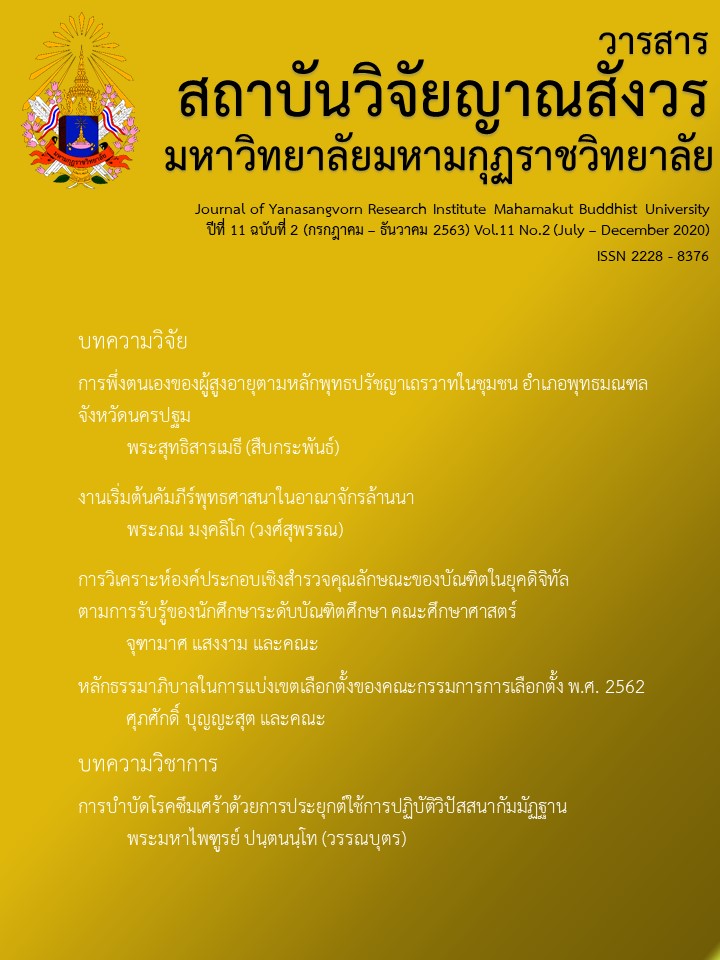ONLINE TEACHING MODEL AND MEASUREMENT METHODS FOR GRADUATED STUDENT
Main Article Content
Abstract
The purposes of this study were to 1) study the online teaching model and measurement methods for evaluating the effectiveness of online teaching in graduated education, and 2) study opinion of students and teachers toward online teaching in instructional media, online teaching, and assignment. Four subjects used in online teaching model were acquired by random sampling from 2 courses (basic course and core course) as of second semester, academic year of 2019. Data analysis was conducted by descriptive statistics and comparing the difference of the proportion of the number of students at each grade level with Median Test. The online teaching model and measurement method for each subject was different according to subject complexity and software used in online teaching model.
Research finding revealed that 1) the proportion of the number of students at each grade level of basic subject was not significantly different from latest academic year, the proportion of the number of students at each grade level of common core subject was significantly different from latest academic year as proportion of A and A- were higher but proportion of B+ and B were lower, and the proportion of the number of students at each grade level of core subject was not significantly different from latest academic year.
Article Details
References
Buzzetto-More, N. A. (Ed.). (2007). Advanced principles of effective e-learning. Informing Science.
Garber, A. M. (2015). Everywhere and anytime, here and now: digital and residential education at Harvard.
Ong, M. T. Y., Ling, S. K. K., Wong, R. M. Y., Ho, K. K. W., Chow, S. K. H., Cheung, L. W. H., & Yung, P. S. H. (2020). Impact of COVID-19 on Orthopaedic clinical service, education and research in a University hospital. Journal of orthopaedic translation, 25(-), 125-127.
Sadiku, M. N., Adebo, P. O., & Musa, S. M. Online Teaching and Learning.
Surr, C. A., Gates, C., Irving, D., Oyebode, J., Smith, S. J., Parveen, S., ... & Dennison, A. (2017). Effective dementia education and training for the health and social care workforce: a systematic review of the literature. Review of educational research, 87(5), 966-1002.
Sun, A., & Chen, X. (2016). Online education and its effective practice: A research review. Journal of Information Technology Education, 15(-), 157-190.


